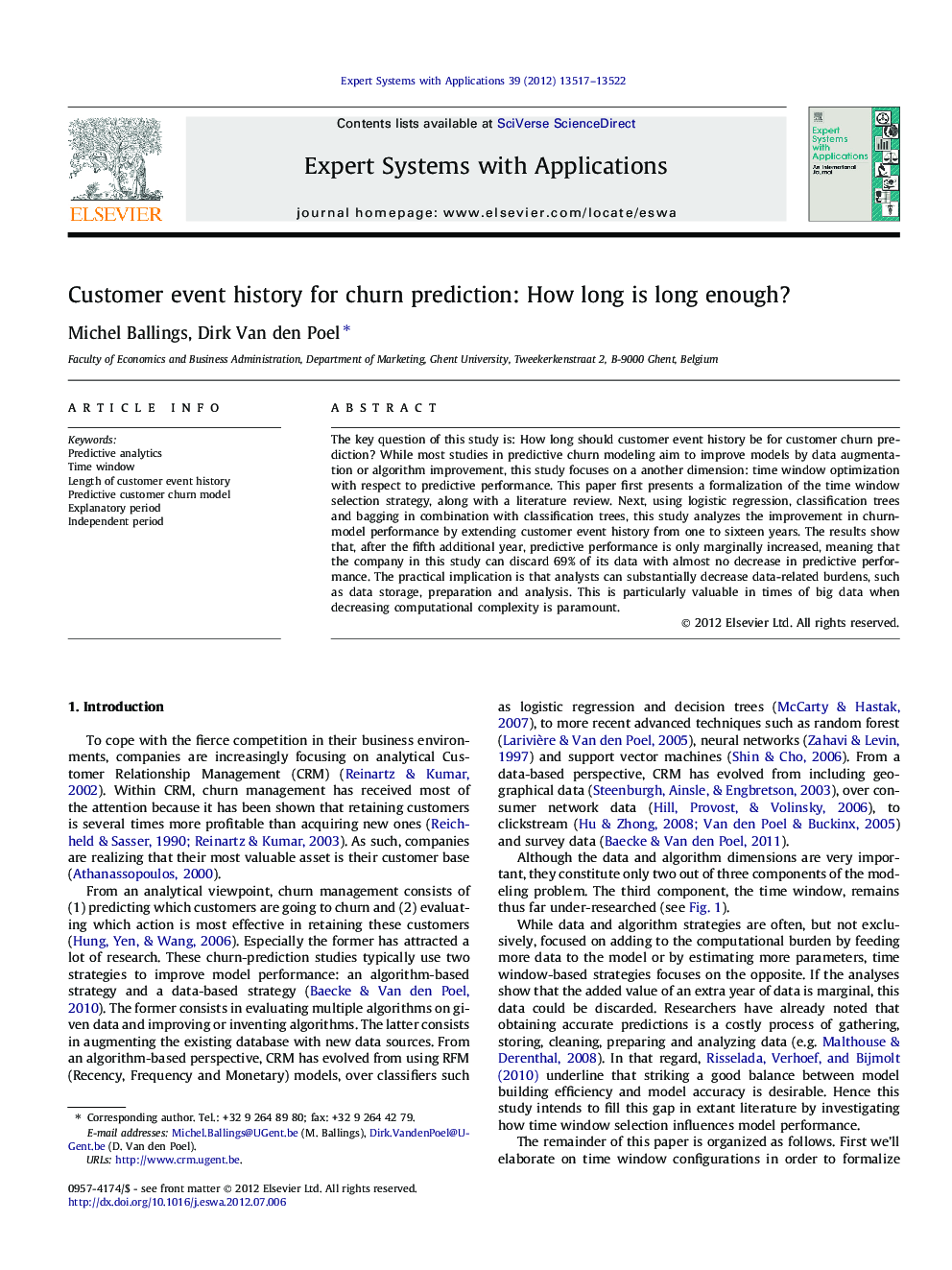| Article ID | Journal | Published Year | Pages | File Type |
|---|---|---|---|---|
| 383326 | Expert Systems with Applications | 2012 | 6 Pages |
The key question of this study is: How long should customer event history be for customer churn prediction? While most studies in predictive churn modeling aim to improve models by data augmentation or algorithm improvement, this study focuses on a another dimension: time window optimization with respect to predictive performance. This paper first presents a formalization of the time window selection strategy, along with a literature review. Next, using logistic regression, classification trees and bagging in combination with classification trees, this study analyzes the improvement in churn-model performance by extending customer event history from one to sixteen years. The results show that, after the fifth additional year, predictive performance is only marginally increased, meaning that the company in this study can discard 69% of its data with almost no decrease in predictive performance. The practical implication is that analysts can substantially decrease data-related burdens, such as data storage, preparation and analysis. This is particularly valuable in times of big data when decreasing computational complexity is paramount.
► We analyze how long customer event history should be in churn prediction. ► We estimate churn models with customer event history from one to sixteen years. ► After the fifth additional year, predictive performance is only marginally increased. ► 69% of data can be discarded with almost no decrease in predictive performance. ► In times of big data and increasing computational complexity this is paramount.
